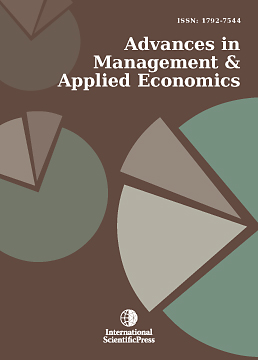Advances in Management and Applied Economics
The Nonlinear Real Interest Rate Growth Model : USA
-
 [ Download ]
[ Download ]
- Times downloaded: 11435
-
Abstract
The article focuses on the chaotic real interest rate growth model. According to the classical theory, the interest rate is determined by the intersection of the investment demand-schedule and the saving-schedule. However, this model supposed that the real interest rate is determined by the intersection of the investment demand-schedule and net capital outflow–schedule and the saving-schedule. The basic aim of this analysis is to set up a relatively simple chaotic real interest rate growth model that is capable of generating stable equilibria, cycles, or chaos. It is important to analyze the stability of the real interest growth in USA in the following periods: 1989-1993, 1998-2004, and 2007-2011. A key hypothesis of this work is based on the idea that the coefficient ð = b / g+e plays a crucial role in explaining local growth stability of the real interest rate, where, b - the coefficient of the investment function, g – the coefficient of the net capital outflow function, e – the coefficient of the saving function. The estimated values of the coefficient ð are smaller than 1 in the observed periods. This result confirms decreasing real interest movement in USA in the observed periods.
